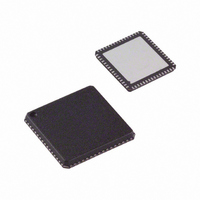AD6655BCPZ-105 Analog Devices Inc, AD6655BCPZ-105 Datasheet - Page 30

AD6655BCPZ-105
Manufacturer Part Number
AD6655BCPZ-105
Description
IC IF RCVR 14BIT 105MSPS 64LFCSP
Manufacturer
Analog Devices Inc
Datasheet
1.AD6655-125EBZ.pdf
(88 pages)
Specifications of AD6655BCPZ-105
Function
IF Diversity Receiver
Frequency
450MHz
Rf Type
Cellular, CDMA2000, GSM EDGE, W-CDMA
Secondary Attributes
32-Bit Numerically Controlled Oscillator
Package / Case
64-VFQFN, CSP Exposed Pad
Receiving Current
575mA
Frequency Range
450MHz
Rf Ic Case Style
LFCSP
No. Of Pins
64
Supply Voltage Range
1.7V To 1.9V
Operating Temperature Range
-40°C To +85°C
Frequency Max
650MHz
Data Rate Max
105Mbps
Rohs Compliant
Yes
Lead Free Status / RoHS Status
Lead free / RoHS Compliant
For Use With
AD6655-150EBZ - BOARD EVAL FOR 150MSPS AD6655AD6655-125EBZ - BOARD EVAL W/AD6655 & SOFTWARE
Lead Free Status / RoHS Status
Lead free / RoHS Compliant, Lead free / RoHS Compliant
AD6655
An on-board common-mode voltage reference is included in
the design and is available from the CML pin. Optimum perform-
ance is achieved when the common-mode voltage of the analog
input is set by the CML pin voltage (typically 0.55 × AVDD).
Differential Input Configurations
Optimum performance is achieved while driving the AD6655
in a differential input configuration. For baseband applications,
the AD8138, ADA4937-2, and
provide excellent performance and a flexible interface to the
ADC. The output common-mode voltage of the AD8138 is
easily set with the CML pin of the AD6655 (see Figure 47), and
the driver can be configured in a Sallen-Key filter topology to
provide band limiting of the input signal.
1V p-p
For baseband applications where SNR is a key parameter,
differential transformer coupling is the recommended input
configuration. An example is shown in Figure 48. To bias the
analog input, the CML voltage can be connected to the center
tap of the secondary winding of the transformer.
2V p-p
0.1µF
Figure 47. Differential Input Configuration Using the AD8138
Figure 48. Differential Transformer-Coupled Configuration
49.9Ω
49.9Ω
499Ω
523Ω
0.1µF
AD8138
499Ω
499Ω
ANALOG INPUT
ANALOG INPUT
2V p-p
ADA4938-2
R
R
R
R
C
C
0.1µF
C
P
D
A
0.1µF
0.1µF
R
differential drivers
Figure 50. Differential Input Configuration Using the AD8352
D
Figure 49. Differential Double Balun Input Configuration
0Ω
0Ω
VIN+
S
VIN–
AD6655
VIN+
VIN–
AD6655
R
S
G
16
1
2
3
4
5
CML
AVDD
CML
AD8352
P
V
Rev. A | Page 30 of 88
0.1µF
0.1µF
CC
14
8, 13
0.1µF
10
11
25Ω
25Ω
0.1µF
0.1µF
The signal characteristics must be considered when selecting
a transformer. Most RF transformers saturate at frequencies
below a few megahertz (MHz). Excessive signal power can also
cause core saturation, which leads to distortion.
At input frequencies in the second Nyquist zone and above, the
noise performance of most amplifiers is not adequate to achieve
the true SNR performance of the AD6655. For applications where
SNR is a key parameter, differential double balun coupling is
the recommended input configuration (see Figure 49).
An alternative to using a transformer-coupled input at
frequencies in the second Nyquist zone is to use the AD8352
differential driver is shown in Figure 50. See the
sheet for more information. In addition, if the application
requires an amplifier with variable gain, the
AD8376
performance driving the AD6655.
In any configuration, the value of the shunt capacitor, C, is
dependent on the input frequency and source impedance and
may need to be reduced or removed. Table 14 displays recom-
mended values to set the RC network. However, these values are
dependent on the input signal and should be used only as a
starting guide.
Table 14. Example RC Network
Frequency Range
(MHz)
0 to 70
70 to 200
200 to 300
>300
0.1µF
200Ω
200Ω
0.1µF
R
R
digital variable gain amplifiers (DVGAs) provide good
C
0.1µF
R
R
C
VIN+
VIN–
AD6655
VIN+
VIN–
AD6655
R Series
(Ω, Each)
33
33
15
15
CML
CML
AD8375
C Differential
(pF)
15
5
5
Open
AD8352
or
data
















